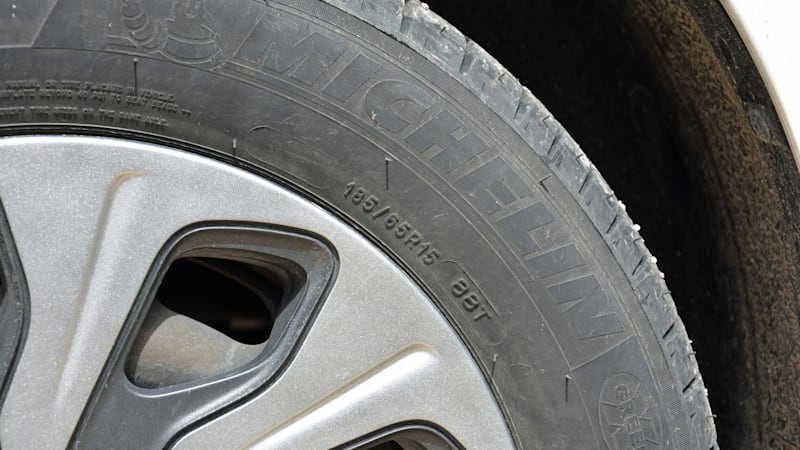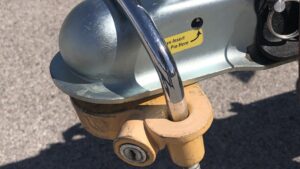Tire sizes and ratings: What do letters and numbers mean?

Your tires can’t talk, but they have a lot to say. Not all tires are created equal, and most of the details that make the difference between a Bridgestone Blizzak and a Pirelli P Zero are summarized on the sidewall. Here’s what the letters and numbers on your tires mean.
The most basic information that you’ll find on a tire’s sidewall is related to its size. This is normally written as 185/65R15, for example, though you’ll sometimes see “P” (for passenger cars) or “LT” (for light trucks) written before this sequence. The first number corresponds to the tire’s width in millimeters; in this case, the tire is 185 millimeters wide. The second number denotes the tire’s aspect ratio; it’s expressed as a percentage. Using the same example, this tire’s height corresponds to 65% of its width. High-profile tires have a higher aspect ratio and vice versa: the 2022 Jeep Wrangler Sahara wears 255/70R18 tires while the Lamborghini Huracán EVO’s front tires are 245/30ZR20 units.
Read more: Replacing Your Tires: Four Money-Saving Tips
Next is the letter R, which appears on nearly every tire regardless of the type of car it’s installed on. It stands for “radial,” and it indicates that radial layers make up the tire. The alternative is bias-ply, a type of construction that’s increasingly becoming obsolete. Bias-ply tires are generally found on older cars and their size is normally expressed differently than a radial tire’s. Finally, the last number corresponds to the size of the wheel that the tire can be mounted on. Again using the example shown above, this tire was made for a 15-inch wheel.
Read more: Wheel alignment and balancing: What you need to know

Those are the basics, but there is a lot of other useful information written on the standard tire sidewall. Every tire manufactured since 1979 needs to feature Uniform Tire Quality Grading (UTQG) markings that provide the treadwear, traction, and temperature ratings. Treadwear corresponds to how long a tire lasts in normal driving conditions. Our example has a treadwear rating of 400, meaning it should last twice as long as a tire with a 200 rating, though precisely how many miles you’ll get out of it depends largely on how you drive.
Read more: Why winter tires are worth it
The traction rating indicates how a tire performs on wet surfaces; AA is the highest level, followed by A, B, and C. Finally, the temperature rating tells you the speed that the tire is capable of relative to the heat that it generates and dissipates. The A rating corresponds to a speed of over 115 mph; a tire with a B rating is good for between 100 and 115 mph; a C rating means the tire can handle speeds between 85 and 100 mph.

Read more: Five things you should know about a spare tire
Speaking of speed, there’s another marking that tells you how fast your tires were designed to go. It’s sometimes listed after or in the dimensions, though it might be elsewhere on the sidewall. Our example has a rating of 88T; T means the tire is safe at up to 118 mph. On the bottom end of the chart, an R-rated tire is certified for up to 106 mph. On the top end, a tire with a Z rating is safe even at speeds of over 150 mph. As for the number, 88 in this case, it’s the load rating; it indicates how many pounds each tire can carry. This is scale-based as well: 70-rated tires can carry 739 pounds, while 126-rated tires are good for 3,748 pounds. In our case, 88 means 1,235 pounds.
Read more: Can’t decide what size wheel to choose? This video might help

One of the most important bits of information that a tire can give you is its age. Rather than asking it for its ID, look for a four-digit code that’s often (but not always) located in an oval. It’s “4117” in the picture above; that means that our tire was manufactured during the 41st week of 2017. This information is useful because there are two main reasons to replace a tire: when it’s worn and when it’s old. Tires have an expiration date, it’s usually about six years, and when it’s reached they need to be replaced even if they have zero miles on them.
Some of the other markings are miscellaneous codes. You may see a batch number that means little to the average driver unless the manufacturer issues a recall, for example. And, instructions are often written on sidewalls to tell mechanics which direction the tire should be mounted in, or which side should face out and which side should face in. Weight and air pressure ratings are normally on sidewalls, too.
Related video:




